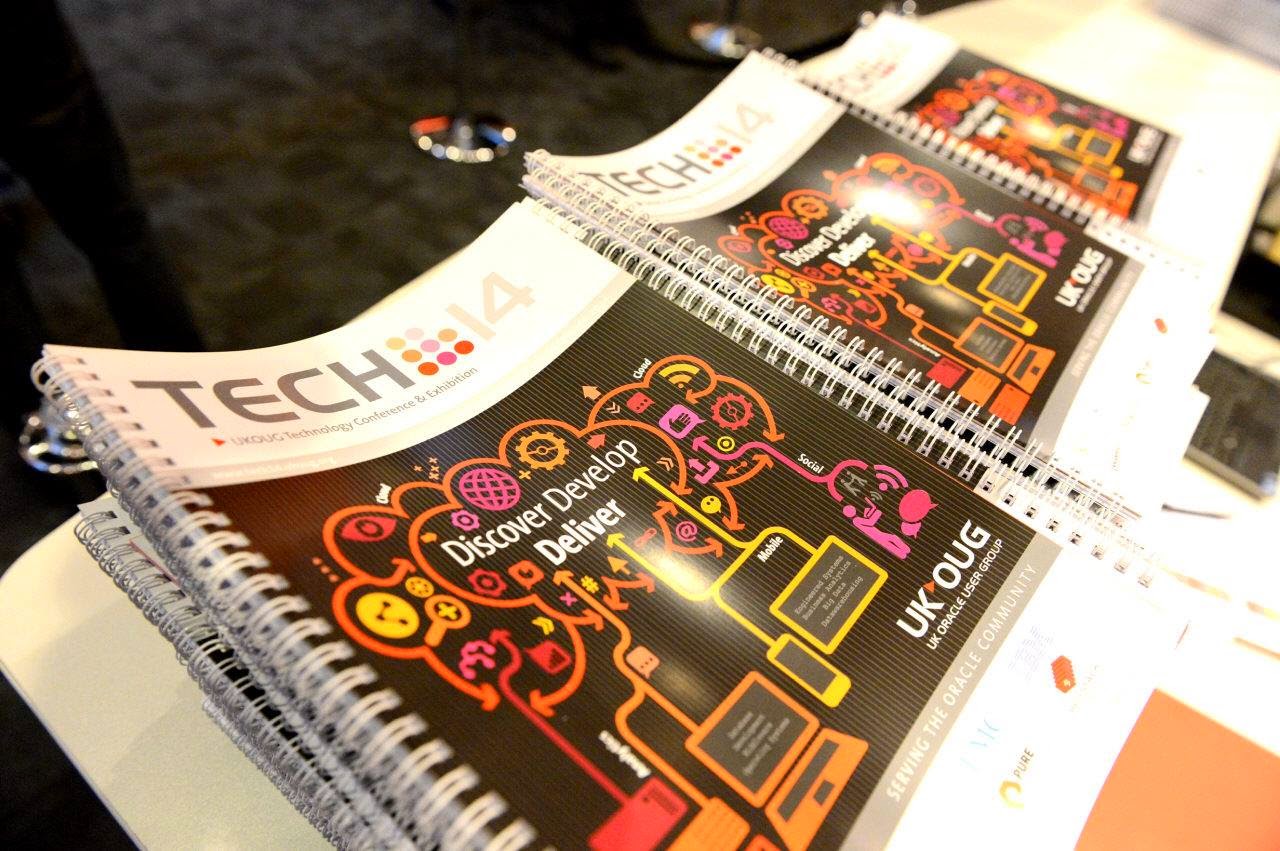Last week I spent 4 days at the annual UK Oracle User Group conference, this time around called
Tech14. It was my first
UKOUG conference in a number of years and I set out with the intention of treating it like an all you can eat buffet of APEX presentations and workshops.
So, what were the APEX highlights of Tech14? Well, I have to start with the presentations given by
Joel Kallman,
David Peake and
Shakeeb Rahman. They gave a number of talks over all 4 days, a fair few of these covered various features of APEX 5. I'm really impressed with the new Page Designer which looks even more like a traditional IDE and will help convince Forms (and ADF, .Net, etc) developers of just how serious a development tool APEX really is. Oracle consider this to be a 'game changer' for APEX and it's hard to disagree.
Shakeeb gave a number of talks centred on the new Universal Theme within APEX 5. This is a new central theme where the look of the template can be changed declaratively using Template Options, which means less need for bespoke HTML/CSS. In addition, the APEX Themeroller (similar to the jQuery UI Themeroller) was demonstrated which allows an APEX application to be styled 'live' whilst the app is running by changing various options. The theme can then be saved to the database.
APEX has always been a tool where SQL & PL/SQL are the core requirements for developers, but a certain level of HTML, CSS and Javascript skills are required to do anything really useful. With APEX 5 it really is going to become easier for 'vanilla' Oracle developer to achieve rich, functional apps using a declarative approach.
Although there was no official APEX stream on the Monday, there were still 6 APEX related presentations, which is testament to its popularity, and a dedicated APEX stream would have made sense. There were dedicated APEX streams on the Tuesday and Wednesday though.
Apart from looking to the future with APEX 5, there were many other notable presentations concentrating on current APEX releases. Here's a few of my favourites:
- Drew Edgar and Derek Renny from Inoapps demonstrated just how much of a RAD tool APEX is by creating a number of apps with interesting features in the time it takes to boil an egg! Particular highlights were the use of QR codes within APEX to update records, and utilising Kimono to create web services that display real time currency data.
- John Scott demonstrated the use of Node.js with APEX. Node is basically "Javascript running on a server", and one interesting use John showed us was as a way to generate Office documents using the officegen module for Node. A nice alternative to BI Publisher and a lot cheaper too!
- Tim Austwick and Nathan Catlow from RECX, gave a talk on SQL Injection in APEX. This was one of the must see presentations for me, and I can highly recommend their book on Oracle Apex Security. In fact I feel it's something that all APEX developers should read at some point.
- Simon Greenwood from Explorer UK gave the last presentation of the day on Tuesday, and showed us that APEX applications don't always have to look like APEX applications! Simon used a case study approach to show us an application they built for a real customer, and talked us through the challenges they faced to incorporate an existing UI the customer used, and designing a multi-language option. What I most liked about this talk was that it was showing us a real, production application and the effort that went into creating it.
To wrap up, I'll say it was great to be back at the UKOUG conference. As a freelance developer, without the benefits of working within a large organisation it's easy to feel a bit isolated, but I'd definitely recommend joining the UKOUG, and attending the Special Interest Groups (SIG) as well. Everyone I've met so far has been incredibly welcoming, especially Jon Barwell, Chair of the
APEX SIG.
See you next year!



Comments